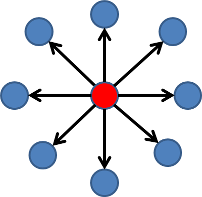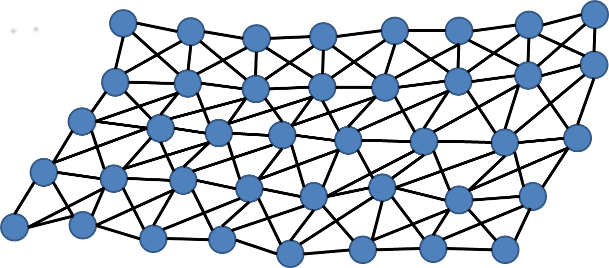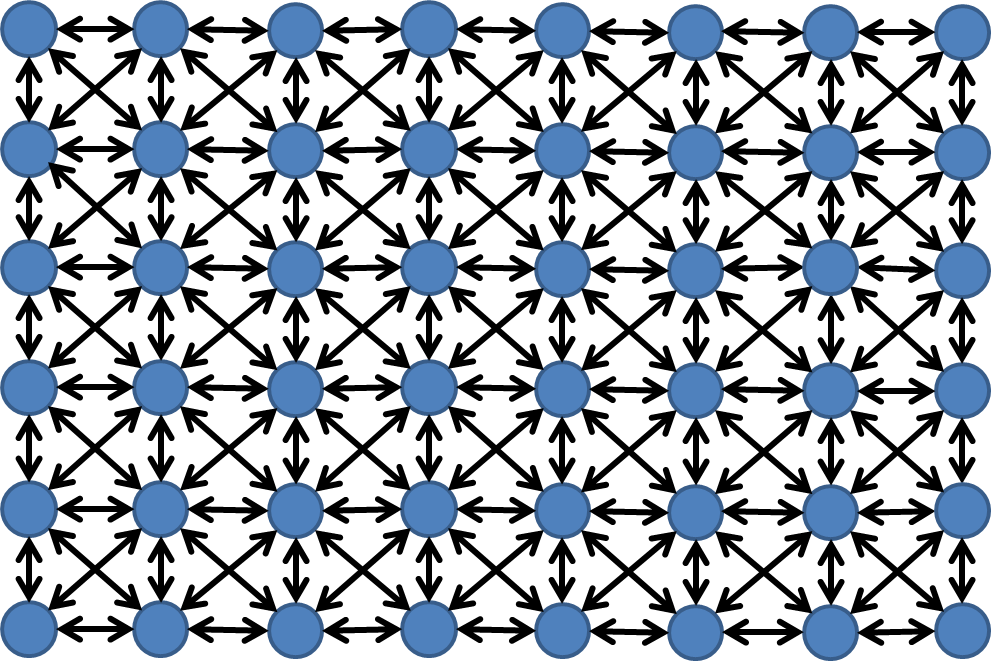Particle systems
CS-116B: Graphics Algorithms
Instructor: Rob Bruce
Spring 2016
SLIDE 1: Particles simulations
- Particles are useful for simulating:
- – explosions
- – rope
- – cloth
SLIDE 2: Simulating explosions
- In an explosion, particles are not tied together. Particles could travel radially from the center of the explosion in some random direction.

SLIDE 3: Simulating rope
- In rope, particles ARE tied together. This constraint limits travel but gives the rope autonomy and stretch.

SLIDE 4: Simulating cloth
- In cloth, particles ARE tied together in a two-dimensional array. Like rope, this constraint limits travel but gives the cloth autonomy and stretch.

SLIDE 5: Mass spring model
- Imagine an array of particles connected via springs:

SLIDE 6:
- To simulate rope, use a single row of particles connected via springs:
![]()
Robert Bruce
Research
Courses
Spring 2016, CS-116B:
Lectures:
- A review of classical mechanics in physics
- Marching cubes algorithm
- Kinematics
- Particle systems
- Simulating cloth with gravity and wind
- Simulating cloth with gravity and collision detection
Assignments:
- Assignment 1: Marching Cubes
- Assignment 2: Particle explosion simulation
- Assignment 3: Rope simulation with gravity and collision detection
- Assignment 4: Cloth simulation with gravity
- Final assignment: Cloth simulation with gravity, wind, and collision detection
